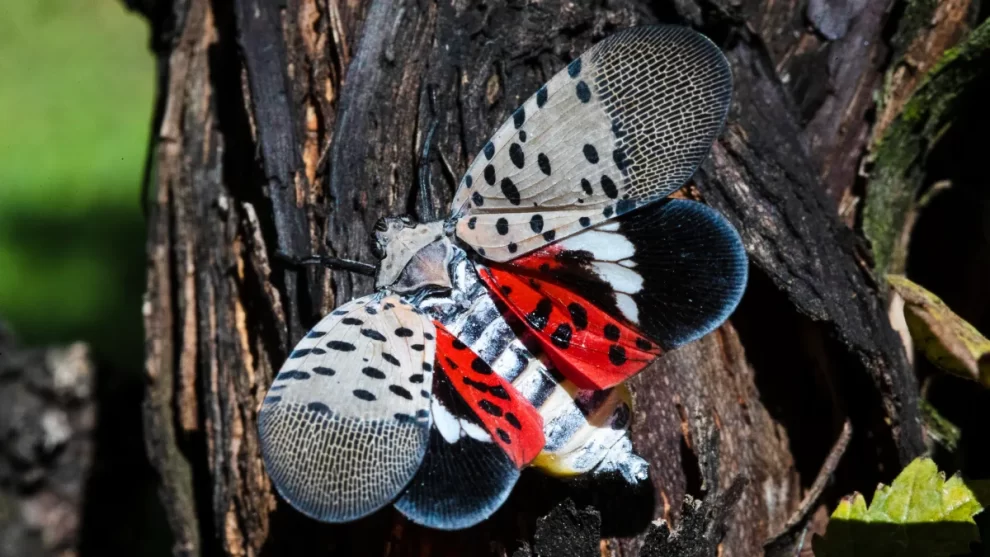The lanternfly is one of the most important pests of the grape industry and poses threats to plants across the country.
The spotted lanternfly might capture your gaze with its unique wings, but don’t let its dazzling beauty fool you.
The bug landed a spot atop Illinois’ 2022 “Most Unwanted” invasive species list, where experts have urged those who see the pest to squash it immediately before also reporting it.
Allen Lawrence, Curator of Entomology at Chicago’s Peggy Notebaert Nature Museum, knows just how dangerous this fly can be to ecosystems in the United States.
“It is just this really gorgeous lantern fly that came from China,” Lawrence said. “But unfortunately, it’s invasive here. It does not belong in the United States.”
The spotted Lantern Fly may be unique in its appearance, but it’s also unique for its damaging nature. Lawrence described the fly as “prolific” for the way it not only weakens vines and their chances for winter survival, but for its molding effect on plants.
Those plants infested by the spotted lanternfly may start to ooze and exude a fermented odor, produce a buildup of sticky fluid, also known as honeydew, or display sooty mold.
Although the spotted lanternfly only has one generation of offspring per year and can typically move no further than four miles in its lifetime, the insect has still been introduced into 12 different states.
“The way they’re getting around to different states is that they lay egg masses on basically any kind of solid object they find outside… and then they’re getting transported accidentally when people move across states,” Lawrence said.
The good news is that the spotted lantern fly isn’t in Illinois currently, though it does live in nearby Midwestern states like Indiana and Iowa. Lawrence said there have been efforts underway to try and slow the spread of the fly and urges those travelling to do their part.
“To keep things that way, if people are travelling to a known are with spotted lanternfly, they should double check and make sure all the outside surfaces of materials that are stored outside don’t have any egg masses on them before coming back to Illinois,” Lawrence said.
Areas where the lanternfly chooses to lay its egg often include the underside of objects like trains, cars, vehicles, boats, lumber or building materials. The eggs are typically found encased in a covering that resembles mud and Lawrence urges anyone who finds one to scrape it off the surface and kill it before travelling back to Illinois.
Additional resources to help identify the lanternfly can be found on the Illinois Department of Agriculture‘s website.
Source : nbcchicago.com































